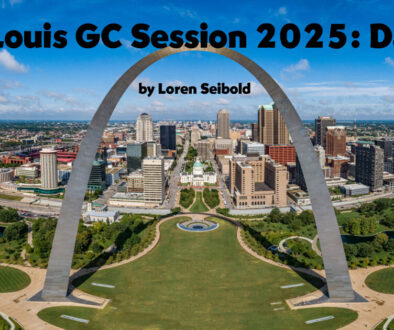Crowd/Mob Psychology
by Herbert Douglass
Years ago, many years come to think of it, I took a graduate course in Discussion and Debate. One of the books assigned to be read and discussed was written by Gustave Le Bon, in English translation The Crowd: A Study of the Popular Mind, 1896.
We discovered that the fascist theories of leadership that emerged during the 1920s owed much to Le Bon's theories of crowd psychology. At the same time, Adolf Hitler's Mein Kampf drew largely on the propaganda techniques proposed in Le Bon's 1895 book. In addition, Benito Mussolini made a careful study of Le Bon's crowd psychology book, apparently keeping the book by his bedside. Others took his ideas and declared that a major feature of democracy was the manipulation of the mass mind by media and advertising. Theodore Roosevelt, as well as many other American progressives in the early 20th century, were also deeply affected by Le Bon's writings. en.wikipedia.org/wiki/Gustave_Le_Bon
That book was an early eye-opener for me. Theories of how to excite a crowd, big or small, became living drama to me, down to our present day. And we have all learned a lot in the last 25 years about crowd control!
Mobs, according to Le Bon, have a “fetish-like respect” for tradition, except moral traditions because crowds are too impulsive to be moral. That’s why many say our Constitution is a “living, breathing” document that some say can be stretched to support rights to gay marriage and abortion; yet, they howl about studying the age at which Social Security and Medicare benefits kick in, as if the actuarials were written in stone in the 1930s.
Le Bon says that it is lucky “for the progress of civilization that the power of crowds only began to exist when the great discoveries of science and industry had already been effected.” If “democracies possessed the power they wield today at the time of the invention of mechanical looms or of the introduction of steam-power and of railways, the realization of these inventions would have been impossible.”
That is an outstanding observation that seems to be amplified year-by-year—the mind-set of the majority can be very persuasive (and counterproductive). Anybody who suffered with peptic ulcers for centuries and was told to drink milk is now grateful that the 2005 Nobel Prize in Physiology of Medicine finally was given to Barry Marshall and Robin Warren, who with tenacity and a prepared mind challenged prevailing dogmas. Wow! For twenty-three years, they were ridiculed by their professional buddies.
In 1982, when the Helicobacter pylori bacterium was discovered by Marshall and Warren, stress and lifestyle were considered the major causes of peptic ulcer disease. It is now firmly established that Helicobacter pylori causes more than 90% of duodenal ulcers and up to 80% of gastric ulcers. Any physician today knows immediately what to prescribe with targeted medications, such as Pepto-Bismol, etc.
Group-think: When The Patient Protection and Affordable Care Act was narrowly passed by Congress in 2010, something interesting happened: Immediately certain groups including government unions, were granted waivers! Democracy can be very strong, but somehow those on top are different—after all, Cuba and Venezuela were once “democracies” but their leaders (Fidel Castro and Hugo Chavez) always had immediate access to the best medical care.
I think of the group-think that seems to control public education in the USA: everyone should (must) go to the local school and block school choice—but leaders are permitted to bypass public schools for their own children who then attend plush private high schools.
Truth is irrelevant; only slogans and fear-mongering delight crowds. For example, herd mentality rules during a financial crisis because people are wired to follow the crowd when times are uncertain, experts say.
Gregory Berns, a neuroeconomist at Emory University in Atlanta, said in a telephone interview that he puts people in magnetic resonance imaging or MRI scanners while he tests their responses to various scenarios, and studies patterns of their brain activation. ONE CLEAR PATTERN — THE BRAIN'S "FEAR CENTER" LIGHTS UP WHEN PEOPLE ARE UNCERTAIN.
"When people are presented with a situation where they don't have information or the information is ambiguous, we see activation of the amygdala and insula," Berns said in a telephone interview.
And people begin to doubt their own judgment. Bern's team did an experiment in which they recruited actors and true volunteers. "Their subjects went into a (MRI) scanner," he said. They were asked to do a simple task, assessing shapes. "We had the group (of actors) tell them the wrong answer sometimes," Berns said.
The volunteers began to change their answers to match what the group said. Perhaps they were merely overriding their own judgments for the sake of getting along, Berns said. But the scanner suggested another explanation: RUNNING WITH THE HERD!
Berns opined: "Our brains are really wired to accept the group opinion of the world."
All this makes me do further thinking. Especially when we realize that “last-day” circumstances focus on national and international events that involve mass movements like we have never seen before—on all continents.
In our next blog, we will discuss the difference between a crowd and a mob, the plus and minuses of populism, the historical problems of democracy and why the United States is a republic and not a democracy—probably the longest-lasting republican form of government in history.
I am intrigued with prophecies such as “All the world marveled and followed the beast” Revelation 13:4, NKJV. Or, “These are of one mind, and they will give their power and authority to the beast.” Revelation 17:13, NKJV. Wow!



